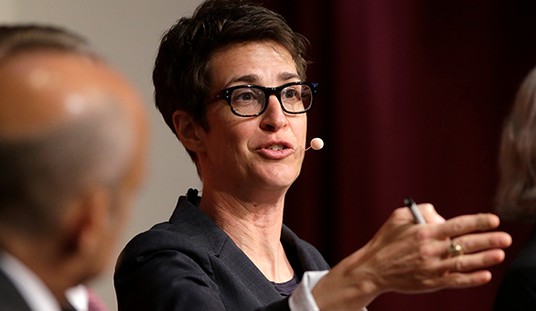It looks like President Obama will have his way with the Chrysler bankruptcy. Between demonizing bondholders in public and intimidating them in private, the president has gotten enough secured bondholders to cave that Judge Arthur Gonzalez will most likely approve the prepackaged transfer of Chrysler’s assets to Fiat, the United Auto Workers (UAW), and the U.S. and Canadian governments. The Chrysler cramdown is a forshpeis (appetizer) for the much larger GM bankruptcy to come. Chrysler “only” has $6.9 million in bondholder debt compared to GM’s $30 billion.
The president has been talking about speculators and hedge fund operators. It’s easy to paint them as fat cats, but the Chrysler creditors who tried to litigate the cramdown in bankruptcy court represent pension funds and other regular folks. Many of GM’s bondholders are individual investors too; people looking for reliable interest income.
Patricia St. Pierre is a nice lady. She and her husband Cliff worked hard, raised a family, got their kids through college, and retired on their investments. They live on Grosse Ile, a comfortable island suburb downriver of Detroit. She’s 70 now and she’s worried about having to go back to work because their life savings may be wiped out in a GM bankruptcy. Patricia and her husband have what she calls a “large amount” invested in unsecured GM bonds. Her husband shared with ABC News that it’s about $200,000.
The St. Pierres attended a meeting at the town hall in Warren, MI, across the street from GM’s Tech Center with other older individual bond holders as the president was announcing the bankruptcy of crosstown rival Chrysler. When I asked her how she came to own the bonds, she said that they had moved to bonds during a downturn in the stock market. They wanted to try “something that was safe.” They initially did well with Ford bonds but moved to GM debt three years ago when Ford seemed to be at greater risk than GM. If you remember, Ford ran into rough financial waters and mortgaged the entire company for the $26 billion that’s keeping it afloat without government aid.
At the time, Ford looked precarious. Ford Motor Company has a history of near death, plus the family remembers the failure of Henry Ford’s first automotive venture. Ford hung on to the Model T for too long and then shut down for six months in 1927 to switch over to the Model A. Henry Ford had to be dragged kicking and screaming into the 1920s, seven years late. Then, after Edsel Ford died during WWII, a senile Henry took over management of the company. Henry was forced out in favor of his grandson Henry Ford II by Eleanor and Clara Ford, who by then controlled 51% of the company. Hank the Deuce brought in the so-called “whiz kid,” revived the company with modern management, and introduced the revolutionary 1949 Ford, the first modern postwar car. Barely a decade later, Ford was back to losing millions introducing the superfluous Edsel line in the middle of a recession.
Compared with Ford, GM has been the model of stability. As St. Pierre’s broker told them, “You don’t think they’ll ever be out of business.” That’s why the St. Pierres haven’t sold before now as GM’s fortunes plummeted. They also didn’t know at first that the debt was unsecured. Then the bottom fell out last fall. Though neither has worked for the company in years, the St. Pierres have ties to GM. Her father is a GM retiree and she worked for GM out of high school for seven years. Cliff St. Pierre graduated from the General Motors Institute. Like most GMI grads back in the day, he began his career at GM as an intern.
The St. Pierres live off the income from their investments and Patricia acknowledged that they’ve earned interest since owning the bonds, but they face losing all the principal since the bonds are unsecured. GM has offered debt holders 225 shares of stock in a reorganized GM in exchange for $1000 of the $27 billion in debt GM owes, plus whatever accrued interest the bonds have at this point. If they don’t accept the deal, GM will declare bankruptcy and they’ll get nothing. The stock offered to bondholders will represent 10% of GM’s equity. Stockholders, punished for enabling a feckless board of directors, will own 1% of GM stock. The government will own 50% of GM, and the UAW’s VEBA will own the remaining 39%. If GM survives, the stock will be worth a bit more than $4 a share, but nobody is kidding anybody that the shares will have any real value anytime soon.
The thing that most troubles the St. Pierres is that they are being left completely out of the loop by both GM and the government. While the large bondholders are negotiating and are in constant contact with GM and the Presidential Task Force On Autos, the St. Pierres haven’t heard a thing except for the most recent prospectus from GM. There is nobody in the process representing their interests. They’ve contacted their senators, Debbie Stabenow and Carl Levin, for information but their elected officials haven’t been very reassuring. The St. Pierres feel pretty helpless. Their broker doesn’t really know any more than they do. The St. Pierres aren’t destitute, but you can hear the worry in Patricia’s voice: “I’m glad my kids aren’t about to graduate [high school] and go to college.”
While it can be argued that they took a risk and lost, the government cutting in line ahead of other prior creditors creates a huge dilemma for investors (those investors could be you, your family, and your neighbors.) As Cliff St. Pierre said, “Who will want to buy bonds?” Who will want to invest if the government is going to step in and declare your investment virtually worthless?
Some say that GM’s stakeholders, management, the UAW, shareholders and bondholders all deserve blame for the company’s decline, but the bondholders and stockholders, while perhaps giving management too little oversight, played by well-defined rules — the rules and laws we’ve used to become the wealthiest society in the planet’s history. Now the president is rewriting the rules.
When I asked whether she thought the administration in Washington or a bankruptcy judge would be more likely to protect her interests, Patricia St. Pierre laughed ruefully and said the bankruptcy judge. She’s not happy about the government owning GM. Afer all, GM’s bondholders have a bigger investment in the company than the government. “It’s not a good situation,” she said.









Join the conversation as a VIP Member